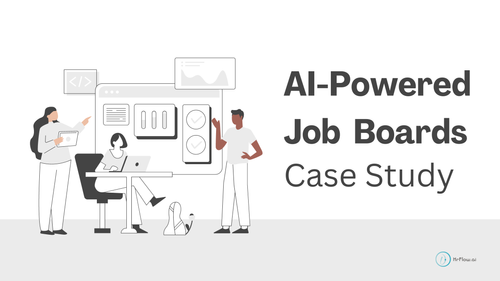Summary:
In this article, we'll delve into the transformative impact of AI in HR and especially on the job board landscape, exploring the benefits of artificial intelligence in human resources for both candidates and recruiters. We will:
- Trace the historical evolution of job boards, noting their transition to Software as a Service (SaaS) models and providing insights into HR AI market growth projections.
- Examine leading job boards such as LinkedIn, Indeed, ZipRecruiter, and Monster, detailing their business models, revenue streams, and AI in HR.
- Breakdown the user experiences with traditional job boards, outlining challenges faced in the hiring process.
- Explore the enhanced experiences enabled by AI, using HrFlow.ai as an example, focusing on precise candidate matching, streamlined application management, and the reduction of bias in hiring.
- Underscore the broader role of AI in HR like addressing challenges and improving overall job hunting and hiring efficiency, while maintaining a personalized touch.
Table of contents:
- Overview
1.1 Abstract - History and Market Landscape of Job Boards
2.1 Key drivers of the expanding Job Boards market
2.2 Top leading Job Boards solutions in the 2023 market
2.3 Job Boards Businesses' Primary Revenue Stream - User Experience with Traditional Job Boards
3.1. Analyzing the Recruiter's Experience
3.2. Analyzing the Candidate's Experience - Building an AI-Powered Job Boards using HrFlow.ai
4.1 AI-powered Job Board for Recruiters
4.2. AI-powered Job Board for Candidates - How To Choose The Right Job Board For You
- Conclusion and Key Takeaways
1. Overview
1.1 Abstract
The recruitment scene has undergone a profound metamorphosis in the last two decades, spurred by technological strides and shifts in market dynamics.
Traditional job boards have given way to the era of AI-powered automation, redirecting the spotlight towards optimizing efficiency, elevating candidate experiences, embracing data-driven decision-making, and harnessing the potential of emerging technologies.
Let's explore the world of job boards, AI in HR, and the exciting future of recruitment together.
2. History and Market Landscape of Job Boards
First, what is a job board? A job board is an online platform where companies post job openings, and candidates can apply. Examples of online job board platforms include LinkedIn, Monster, and Indeed.
Before the candidate journey model, job boards went through a 180-degree transformation. From agency-focused platforms to accommodating both agencies and corporate employers.
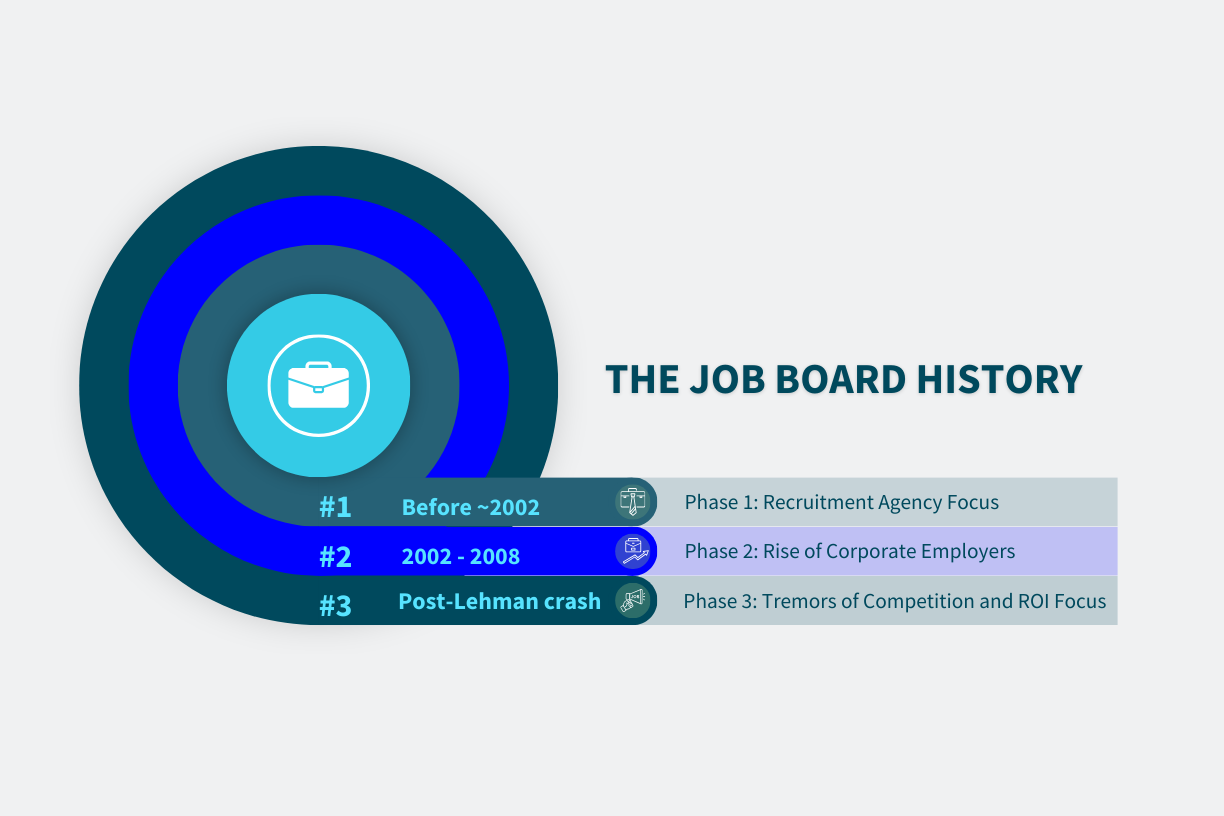
2.1 Key drivers of the expanding Job Boards market
Job boards underwent a revolutionary shift to SaaS models, moving from standalone platforms to cloud-based services.
This transition allowed subscription-based access, removing on-premises setups, and delivering scalability in hiring processes. SaaS job boards streamlined recruitment, offering regular updates, maintenance, and easy accessibility for businesses of all scales.
Here is a breakdown of the changes that came with this shift:
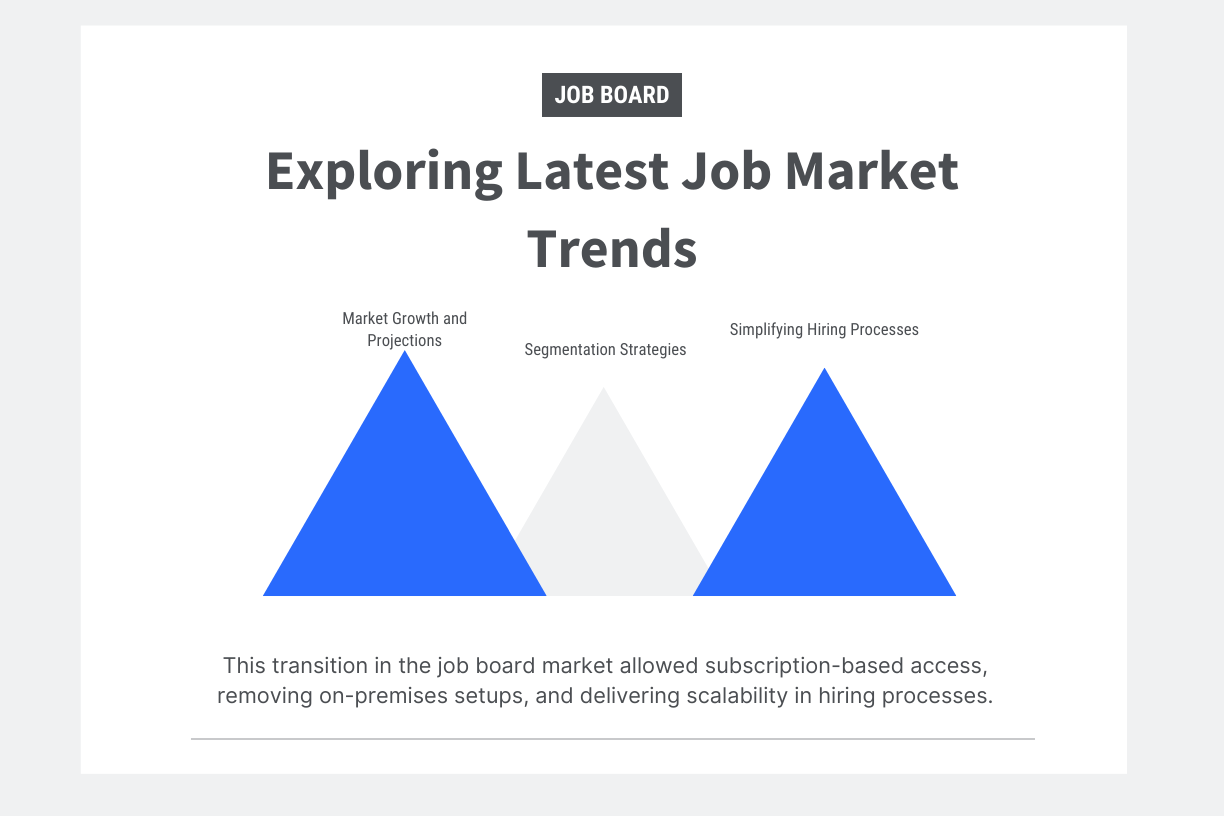
2.1.1 Job Market Predictions 2023
- By 2023, the Job Board Software market surged to USD 11.3 billion. Projections forecast a continued upward trend, estimating a market size of USD 76.8 billion by 2030, fueled by a robust Compound Annual Growth Rate (CAGR) of 31.5%, all thanks to artificial intelligence in human resources.
2.1.2 Segmentation Strategies
- Segmentation by type includes PC-based, Mobile-based, and Others, accommodating various technological preferences. Additionally, the market caters to diverse application needs, serving both Small and Medium-Sized Enterprises (SMEs) and Large Enterprises.
2.1.3 Simplifying Hiring Processes
- Job Board Software offers user-friendly tools for companies to create custom career pages without complex coding. This streamlines the application process for candidates while providing insights into company culture, values, and offerings.
2.2 Top leading Job Boards solutions in the 2023 market
Here are the best job boards for tech jobs of 2023:
- LinkedIn: LinkedIn, the largest professional social network, is increasingly becoming a go-to platform for job postings due to its extensive reach and growing user base. It caters mostly to professional and senior-level roles. LinkedIn offers various job posting solutions for businesses, leveraging its robust networking capabilities. Its business model primarily revolves around premium memberships, job postings, and sponsored content to target specific audiences.
- ZipRecruiter: ZipRecruiter started as an applicant tracking system and has evolved into a comprehensive job board. It allows employers to post jobs across various platforms, including ZipRecruiter itself. The platform charges employers based on subscription plans, offering access to a wide range of job posting and applicant management features.
- Indeed: Indeed stands out as one of the most recognizable names in job searching. It started as a job search engine and aggregator and has grown into the largest global job board. It connects millions of job seekers with diverse job listings. Indeed's business model revolves around pay-per-click job postings, where employers pay based on the number of clicks their job ads receive.
- Monster: Monster is renowned for its diverse job listings and comprehensive resume database. It offers pay-per-click job postings and subscription-based plans for employers. Employers can access the platform's vast talent pool and choose from different posting options based on their hiring needs.
- Dice: Dice specializes in tech and IT jobs, offering a focused platform for professionals in the technology sector. It not only provides job listings but also valuable insights and resources tailored to the specific needs of the tech industry, making it an ideal choice for tech professionals.
- Glassdoor: Glassdoor is more than a job search site—it's a comprehensive platform that combines job listings with company reviews and salary insights. It targets a diverse audience, providing transparency into company culture and compensation to help users make informed career decisions.
- CareerBuilder: CareerBuilder is a versatile job board for a broad range of professionals. Offering an extensive collection of job listings, it goes beyond the basics by providing tools like resume-building assistance and career advice. It aims to be a one-stop destination, supporting job seekers with a variety of resources.
- SimplyHired: SimplyHired simplifies the job search process by aggregating listings from various sources. Catering to a diverse audience, it provides a consolidated and efficient experience for users seeking opportunities across different industries.

2.3 Job Boards Businesses' Primary Revenue Stream
"How does ZipRecruiter make money?", "does Indeed cost money for job seekers?", and "Indeed charging per application?",...Here is a breakdown of how job boards make money in 2023.
- Pay-Per-Click Job Postings: Employers pay based on the number of clicks their job ads receive, aligning costs with the level of candidate engagement.
- Subscription-Based Plans: Employers subscribe to access a range of features such as job postings, candidate databases, and applicant management tools, paying a recurring fee for ongoing access.
- Premium Memberships: Offer enhanced features or access to a specialized audience in exchange for a subscription fee.
- Data-Driven Technology Services: Leveraging advanced technology to provide data-driven solutions for employers seeking top-notch candidates, charging for access to advanced search tools and candidate insights.
- Sponsored Content: Offering sponsored content opportunities for businesses to promote job listings or targeted content to specific audiences within the platform.
- Advertisement Revenue: Generating income through displaying advertisements, often in the form of banner ads or other placements within the platform, charging businesses for ad space or clicks on these ads.
3. User Experience with Traditional Job Boards
Job boards can be categorized into two types: 'aggregators' and 'non-aggregator' sites. The traditional functioning of non-aggregator job boards centers on posting vacancies and expecting high-quality, aligned applicants.
While they've been a prime hiring source, trends suggest a shift towards other strategies like referrals, career sites, and social media.
On the other hand, a job board aggregator operates similarly to Google's search engine, gathering job listings from various sources and displaying them in query results using an algorithm to determine their order of appearance.
The landscape showcases an evolving scenario, evidenced by shifts in market values and companies' adoption of more personal, high-touch approaches like Talent Communities over job boards.
3.1. Analyzing the Recruiter's Experience
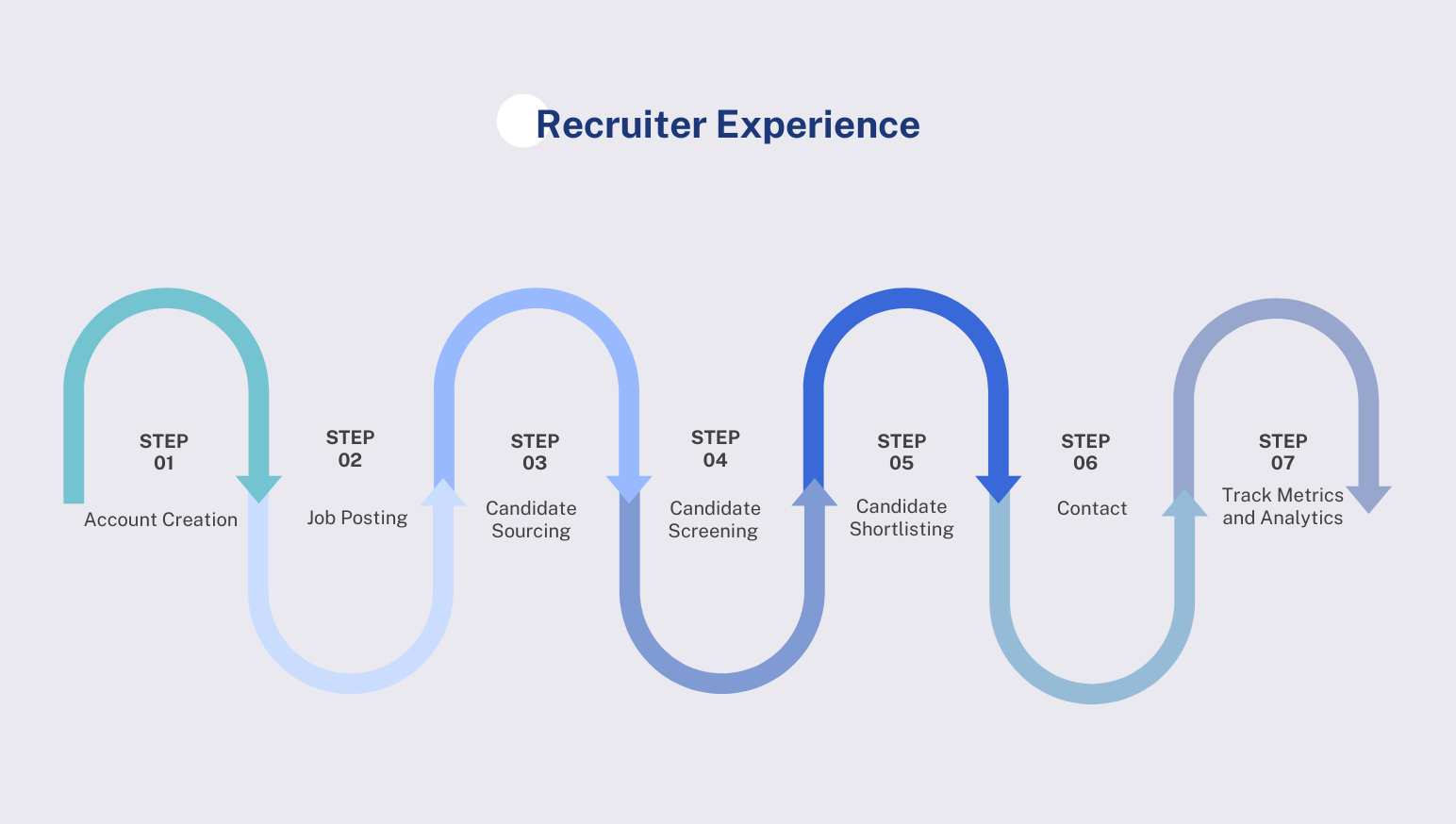
3.1.1 Account Creation
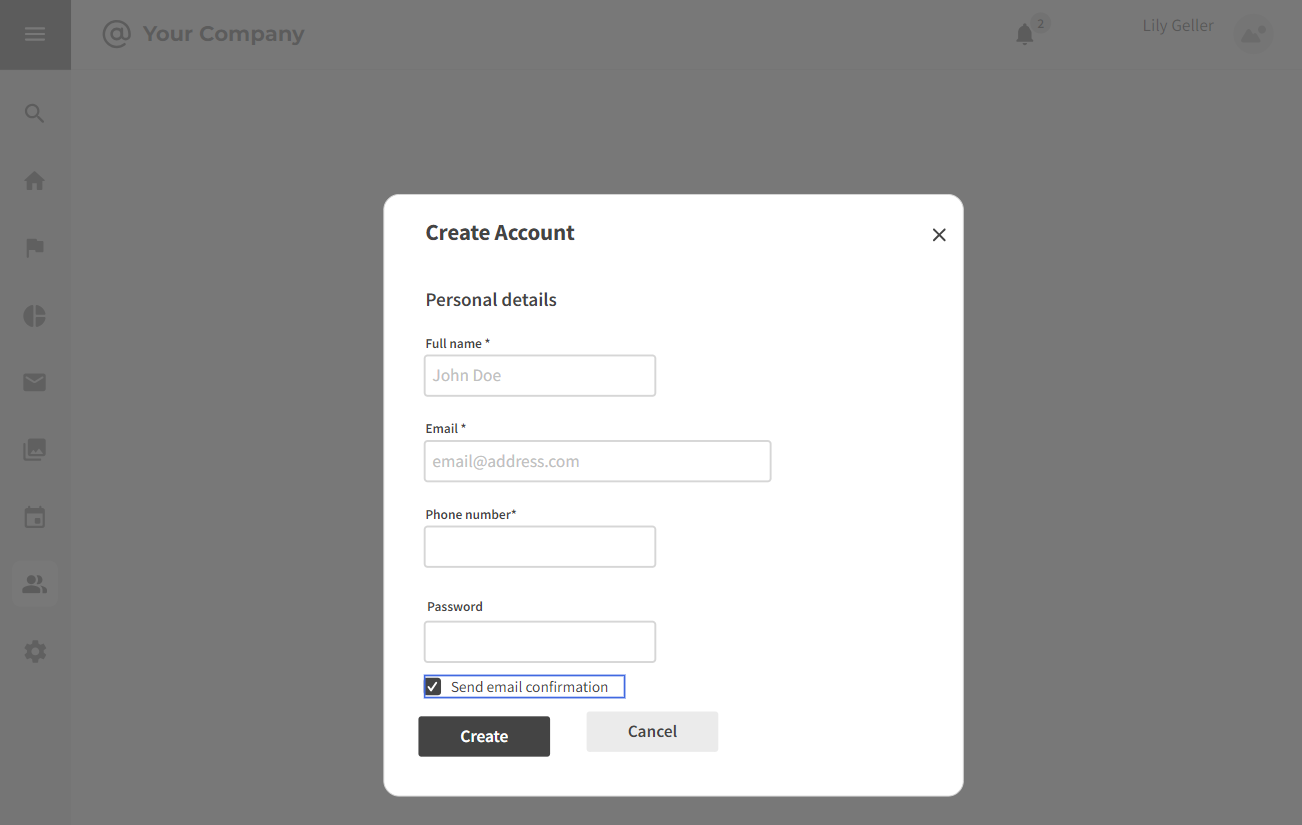
Strengths:
- Quick and easy account creation process for recruiters.
- Enables input of personal and company details efficiently.
Weaknesses:
- Potential data privacy and security concerns.
- Required information may deter some recruiters.
Opportunities:
- Enhance security with multi-factor authentication.
- Provide incentives for account creation.
Threats:
- Competition from platforms with more user-friendly processes.
- Negative feedback on data security may impact reputation.
- Limited customization options may drive recruiters to other platforms.
3.1.2 Job Posting
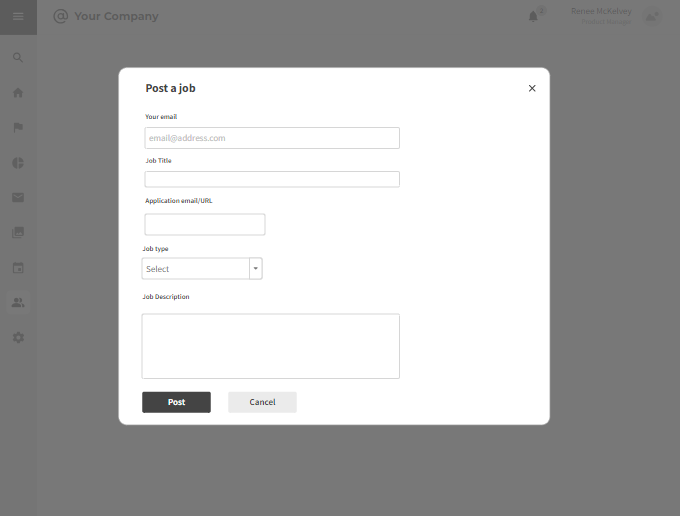
Strengths:
- Broad Reach: Job postings on platforms provide exposure to a wide and diverse audience.
- Flexibility: Options for both free and sponsored postings cater to various budget constraints.
- Detailed Listings: Recruiters can provide comprehensive details about the job, attracting suitable candidates.
Weaknesses:
- Cost Implications: Sponsored postings may involve costs, impacting the budget for small businesses.
- Saturation: In competitive markets, job listings may face saturation, reducing visibility.
- Quality Control: Free postings might attract unqualified candidates, requiring additional screening.
Opportunities:
- Enhanced Analytics: Improved job listing analytics can offer insights into the effectiveness of postings.
- Specialized Postings: Collaborations with industry-specific platforms for targeted job listings.
Threats:
- Shifts in Job-Seeking Behavior: Changes in how candidates search for jobs may impact the effectiveness of traditional postings.
- Competition: Emerging platforms with innovative features may challenge established job boards.
3.1.3 Candidate Sourcing
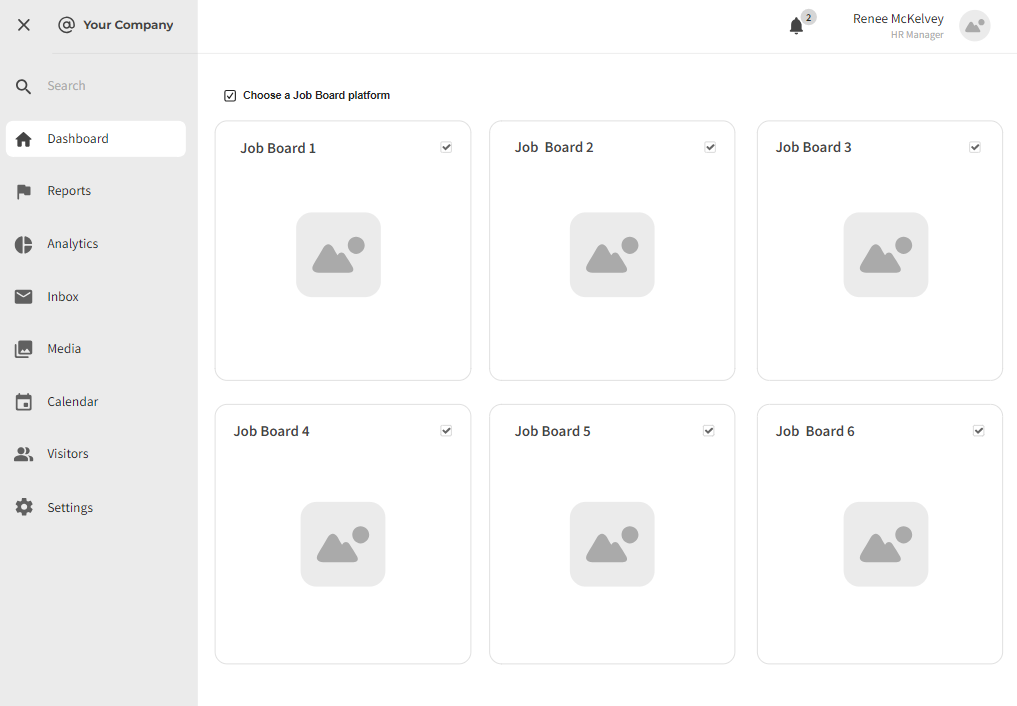
Strengths:
- Access to Vast Database: Recruiters can tap into a large pool of potential candidates.
- Advanced Filtering: The ability to filter resumes based on skills, experience, and other criteria enhances precision.
- Efficiency: Saves time compared to traditional manual resume sourcing.
Weaknesses:
- Dependence on Self-Reporting: Accuracy relies on candidates providing up-to-date and truthful information.
- Limited Visibility: Passive candidates not actively updating profiles may be missed.
Opportunities:
- AI Integration: Implementation of AI for more intelligent and automated resume matching.
- Expanded Databases: Collaboration with professional networks for broader candidate access.
Threats:
- Privacy Concerns: Access to resume databases raises potential privacy issues.
- Inaccuracies: Resumes may contain inaccuracies or outdated information.
3.1.4 Candidate Screening
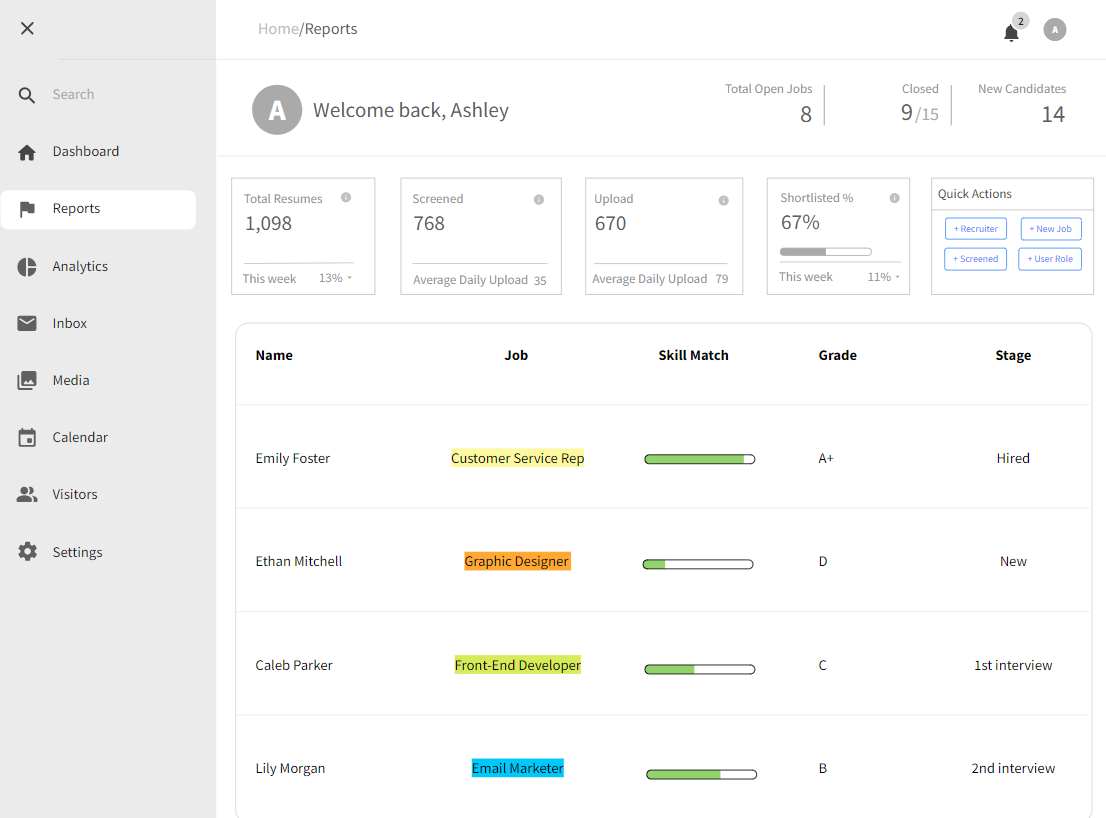
Strengths:
- Objective Screening: Recruiters can objectively evaluate resumes and applications.
- Alignment with Criteria: Efficient screening ensures candidates align with desired qualifications.
- Efficiency: Automation aids in quick initial screening.
Weaknesses:
- Potential Oversight: Automated screening may miss nuanced qualifications or experience.
- Time-Consuming: Comprehensive screening of a large applicant pool can be time-intensive.
Opportunities:
- AI-Driven Screening: Implementing AI for more advanced and nuanced candidate evaluations.
- Training Programs: Continuous training for recruiters on unbiased and effective screening.
Threats:
- Resistance to Standardization: Some hiring teams may resist standardized screening processes.
- Incomplete Feedback: Delayed or incomplete feedback may hinder comprehensive candidate evaluation.
3.1.5 Candidate Shortlisting
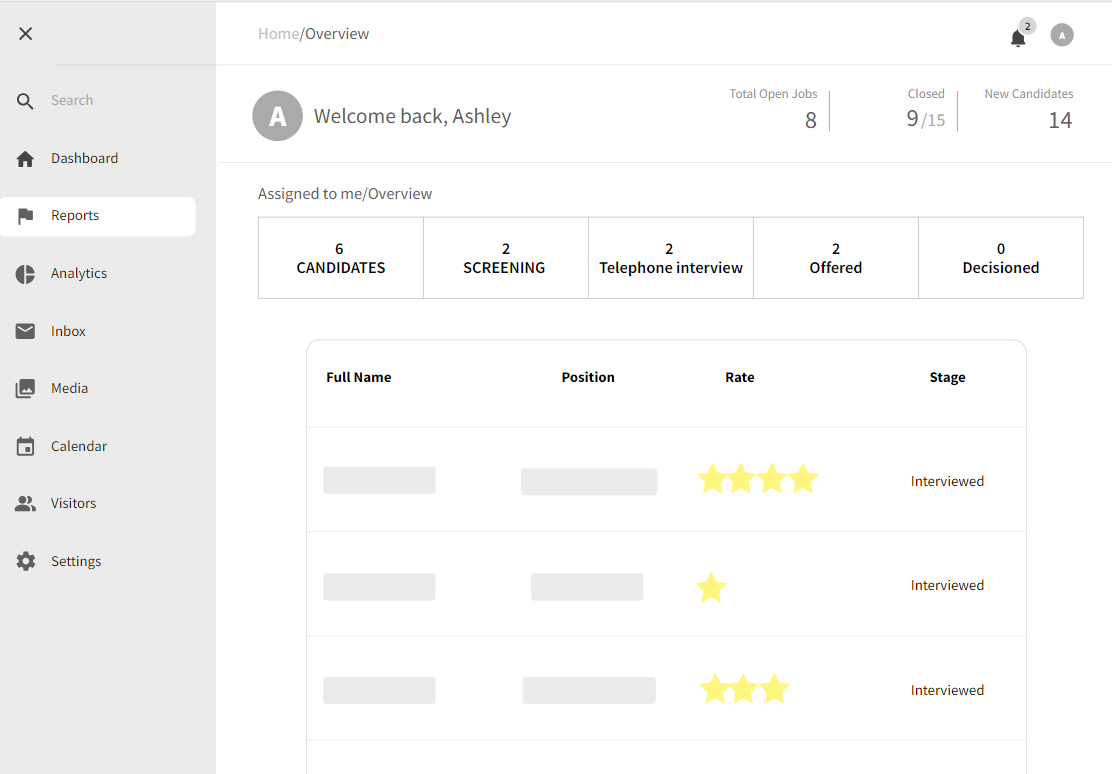
Strengths:
- Efficient candidate shortlisting with comprehensive information analysis.
- Customizable criteria for tailoring shortlists to specific job requirements.
Weaknesses:
- Potential concerns about data privacy and security.
- Complex shortlisting processes may cause recruiter frustration and disengagement.
- Over-reliance on automated shortlisting may overlook nuanced candidate qualities.
Opportunities:
- Implement AI tools to enhance and expedite the shortlisting process.
- Optimize platforms for mobile use, facilitating quick and convenient shortlisting.
Threats:
- Competition from platforms with superior and user-friendly shortlisting features.
- Negative feedback from recruiters may impact the platform's reputation.
- Ineffective shortlisting algorithms may lead to dissatisfaction among recruiters.
3.1.6 Contact
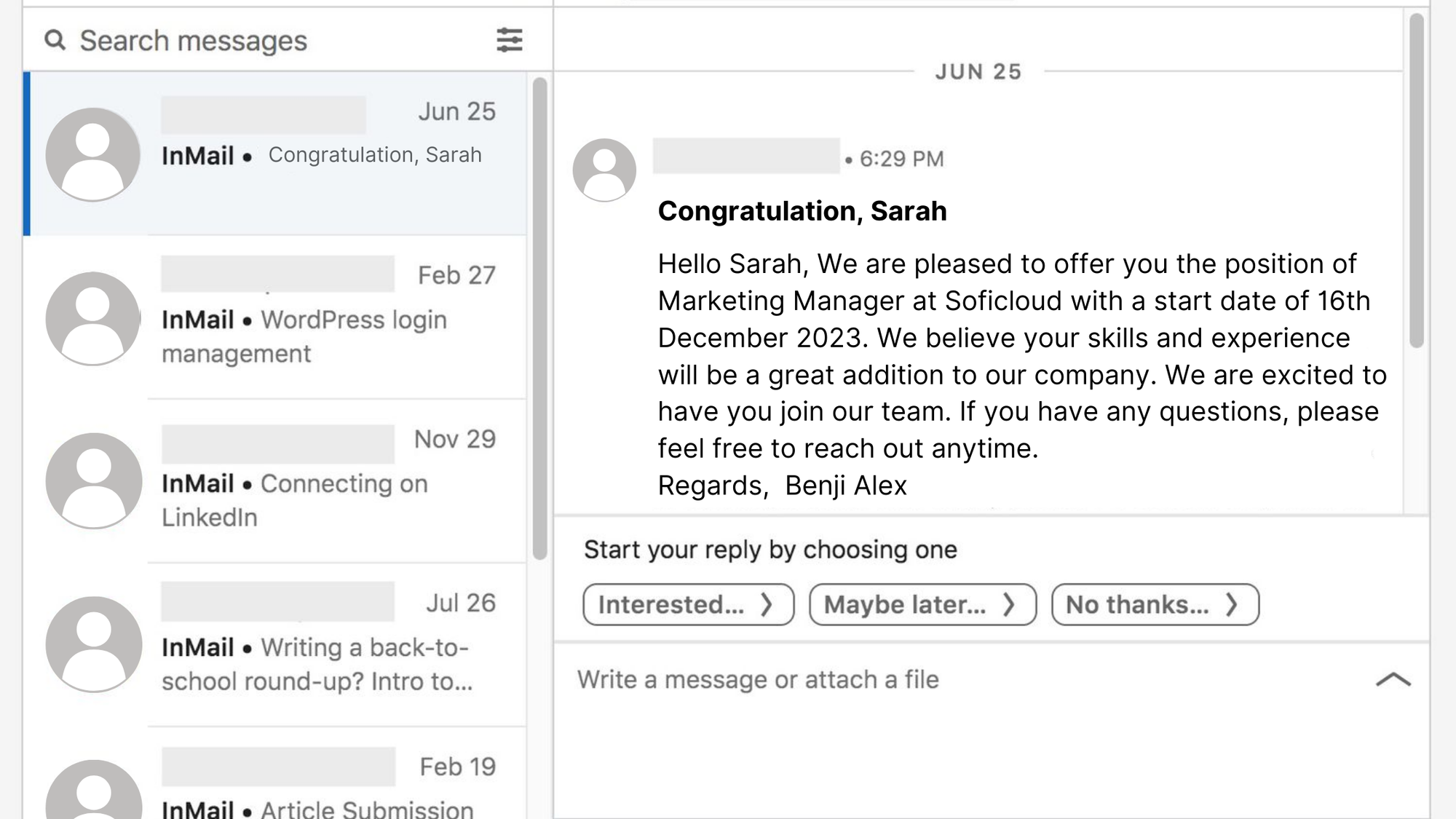
Strengths:
- Efficiency and Convenience: Centralized communication streamlines the recruitment process.
- Structured Messaging: The platform provides clear, organized communication.
Weaknesses:
- Limited Personalization: May lack the personal touch of direct communication.
- Platform Dependence: Relying solely on the platform could pose challenges.
Opportunities:
- Integration with External Tools: Platforms could integrate with external communication tools.
- Automated Communication: Implementing automation saves time for recruiters.
Threats:
- Communication Overload: An abundance of messages may lead to information overload.
- Privacy Concerns: Some candidates may have privacy concerns.
- Competitive Job Board Platforms: Competition may drive the need for continual enhancement.
3.1.7 Track Metrics and Analytics
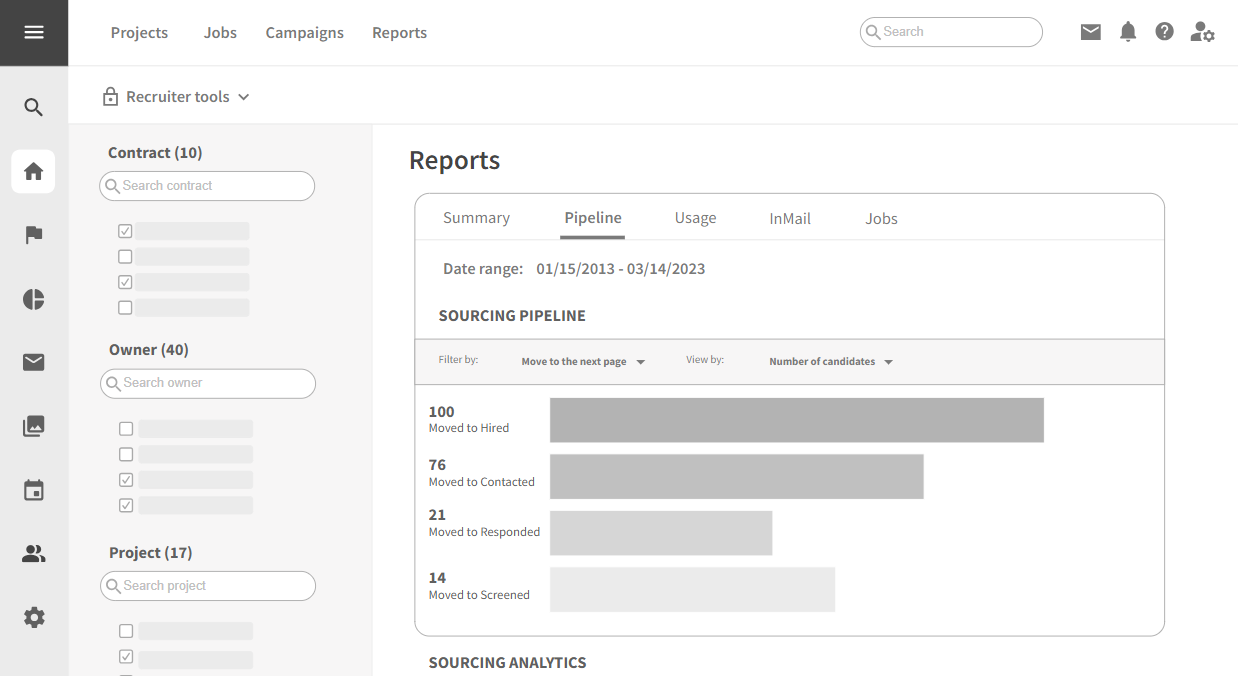
Strengths:
- Centralized Data: Metrics and analytics are centralized on the platform, providing a unified view.
- Real-time Tracking: Platforms often offer real-time tracking of job postings and sourcing strategies.
Weaknesses:
- Limited Customization: Some platforms may have limitations in customizing analytics based on unique business needs.
- Learning Curve: Users may require time to adapt to the analytics tools offered by the platform.
Opportunities:
- Integration with External Analytics Tools: Platforms could integrate with external analytics tools for more comprehensive insights.
- Customization Features: Enhancing customization options for analytics can cater to diverse reporting needs.
Threats:
- Data Security Concerns: Privacy and security concerns may arise with the centralized storage of sensitive recruitment data.
- Competition in Analytics Tools: Other platforms with superior analytics capabilities may pose a competitive threat.
3.2 Analyzing the Candidate's Experience
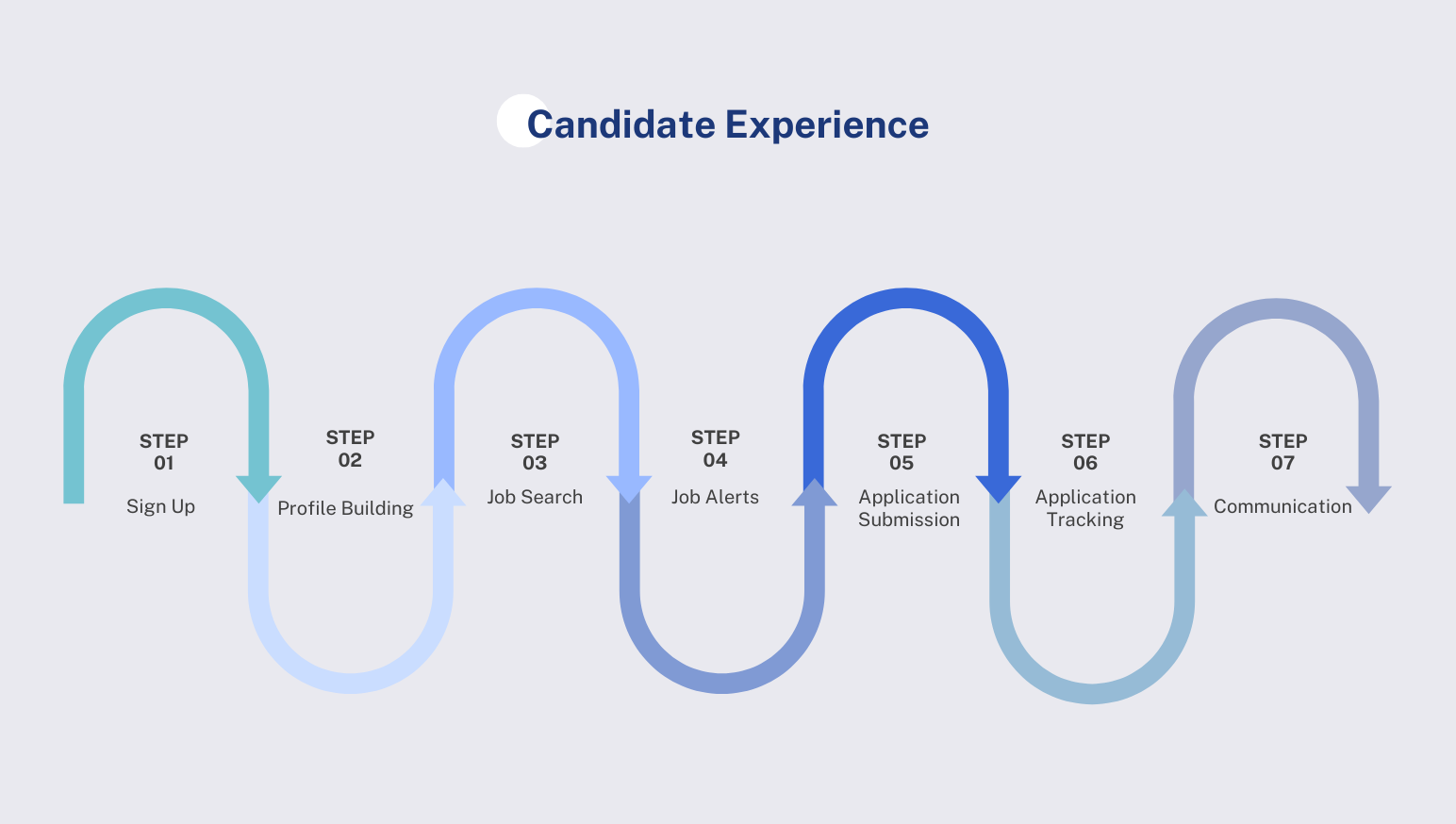
3.2.1 Sign Up
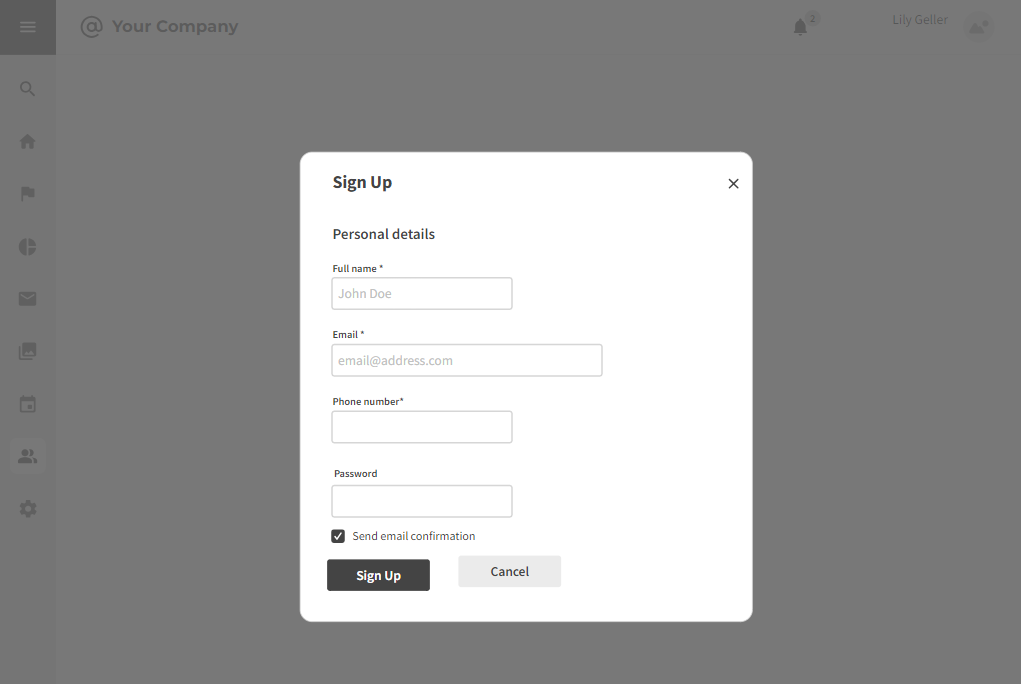
Strengths:
- Efficient Data Collection: Enables comprehensive gathering of candidate information.
- Standardized Process: Ensures consistency in capturing essential details.
- Seamless Workflow Integration: Integrates smoothly into overall recruitment processes.
Weaknesses:
- Lengthy Process: Potential for candidate frustration and drop-offs.
- Suboptimal User Experience: Limited user-friendly design may deter applicants.
- Redundant Information Entry: Repetitive data input for candidates.
Opportunities:
- Automation Integration: Streamline the process with an automated data population.
- Enhanced Customization: Tailor the 'Sign Up' step to specific organizational needs.
Threats:
- Candidate Drop-off: Lengthy processes may lead to applicant abandonment.
- Competitive Disadvantage: Outdated systems may disadvantage organizations.
- Security Concerns: Risk of data exposure without robust security measures.
3.2.2 Profile Building
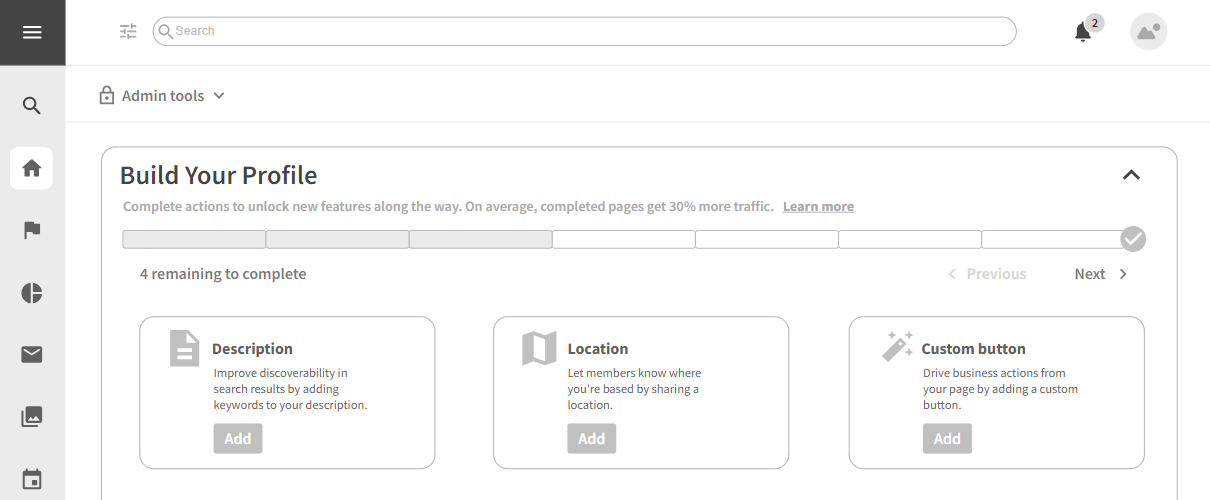
Strengths:
- Comprehensive Information: Allows detailed showcasing of skills and experiences.
- Customization Options: Enables tailored presentation for better visibility.
- Visibility and Reach: Expands exposure to a broad range of recruiters.
Weaknesses:
- Dependence on Platform Features: Effectiveness relies on platform capabilities.
- Privacy Concerns: Potential worries about data security and privacy.
Opportunities:
- Integration with Social Media: Explore integration for dynamic profiles.
- AI-Based Profile Enhancement: Implement AI for skill suggestions and trends.
- Skill Validation and Certifications: Provide features for skills validation.
Threats:
- Data Misuse: Risk of data misuse if security measures are inadequate.
- Inaccurate Representation: Possibility of candidates misrepresenting skills or experiences.
- Overemphasis on Keywords: Risk of diluted match accuracy due to keyword reliance.
3.2.3 Job Search
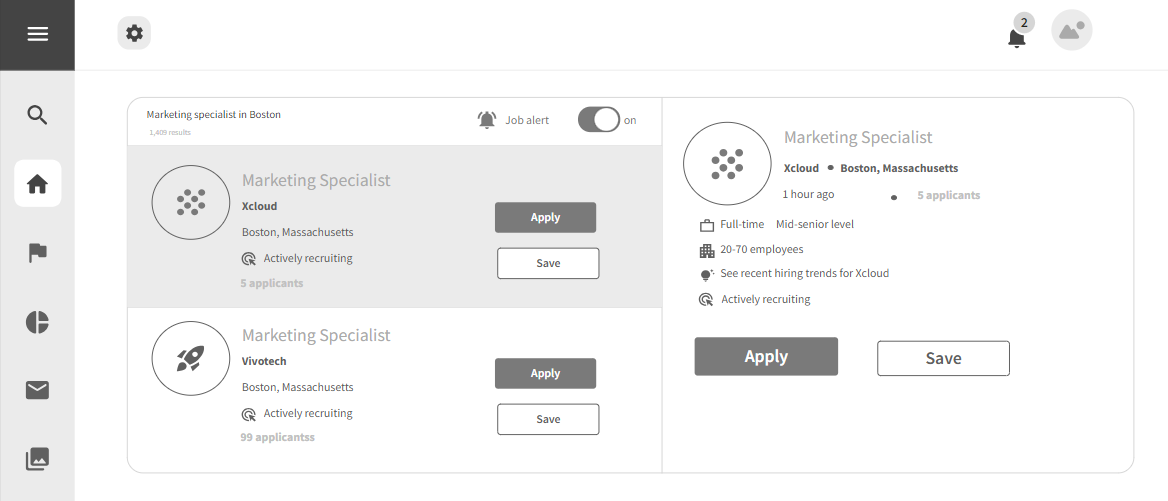
Strengths:
- Multi-Channel Discovery: Candidates can discover job listings through various channels like social media, career pages, and job advertisement sites.
- Ease of Locating: The initial interaction is positive when candidates easily locate job postings, setting the tone for the hiring experience.
Weaknesses:
- Visibility Challenges: If job listings are not easily accessible, candidates may face difficulties in the initial search.
Opportunities:
- Optimized Social Presence: Improving social media visibility enhances the chances of candidates finding job listings.
Threats:
- Competitive Listings: In a crowded job market, job listings may face competition, affecting visibility.
3.2.4 Job Alerts
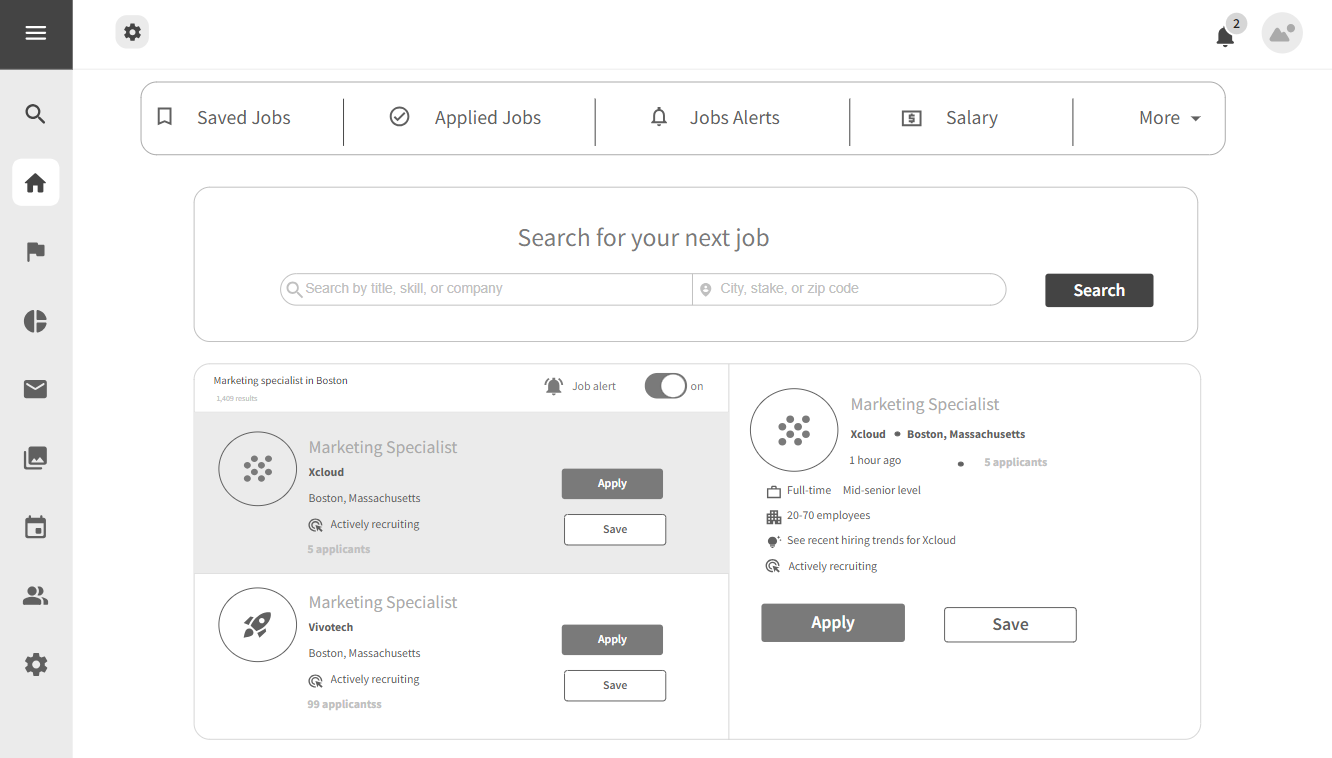
Strengths:
- Provides timely notifications about relevant job opportunities.
- Enhances candidate awareness and accessibility to new job listings.
Weaknesses:
- Risk of receiving too many alerts, potentially leading to information overload.
- Limited customization options for refining alert preferences.
Opportunities:
- Implement personalized filtering options for more targeted job alerts.
- Integrate machine learning to improve the relevance of job suggestions.
Threats:
- Competition from platforms offering more refined and accurate job alert features.
- Negative feedback due to irrelevant or overwhelming alerts may impact user satisfaction.
3.2.5 Application Submission
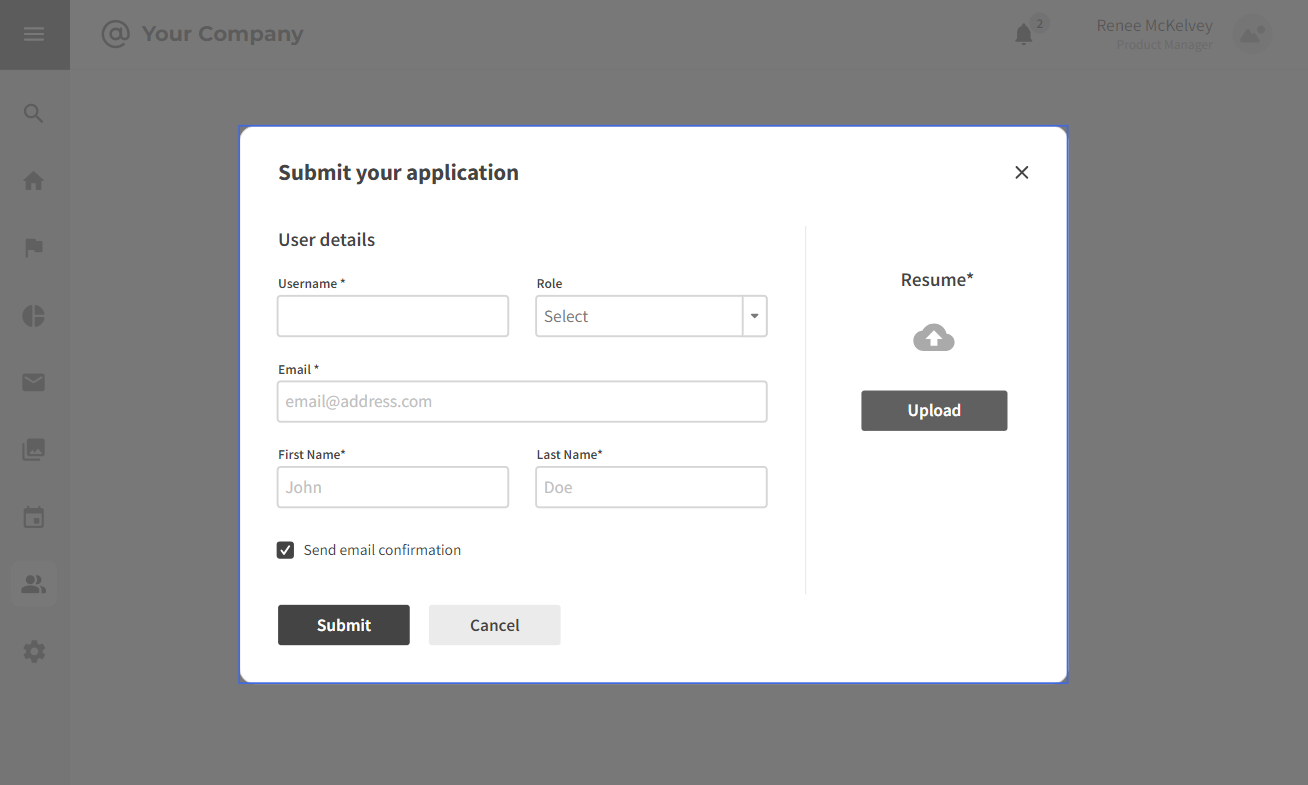
Strengths:
- Clear Job Descriptions: Well-crafted job descriptions provide candidates with a clear understanding of roles and expectations.
- User-Friendly Application Process: A straightforward application process ensures a positive candidate experience.
Weaknesses:
- Complicated Application Procedures: Complex application processes may discourage candidates from proceeding.
Opportunities:
- Online System Optimization: Enhancing the online application system improves the candidate's ease of application.
Threats:
- Technical Glitches: Issues in the online application system can frustrate candidates.
3.2.6 Application Tracking
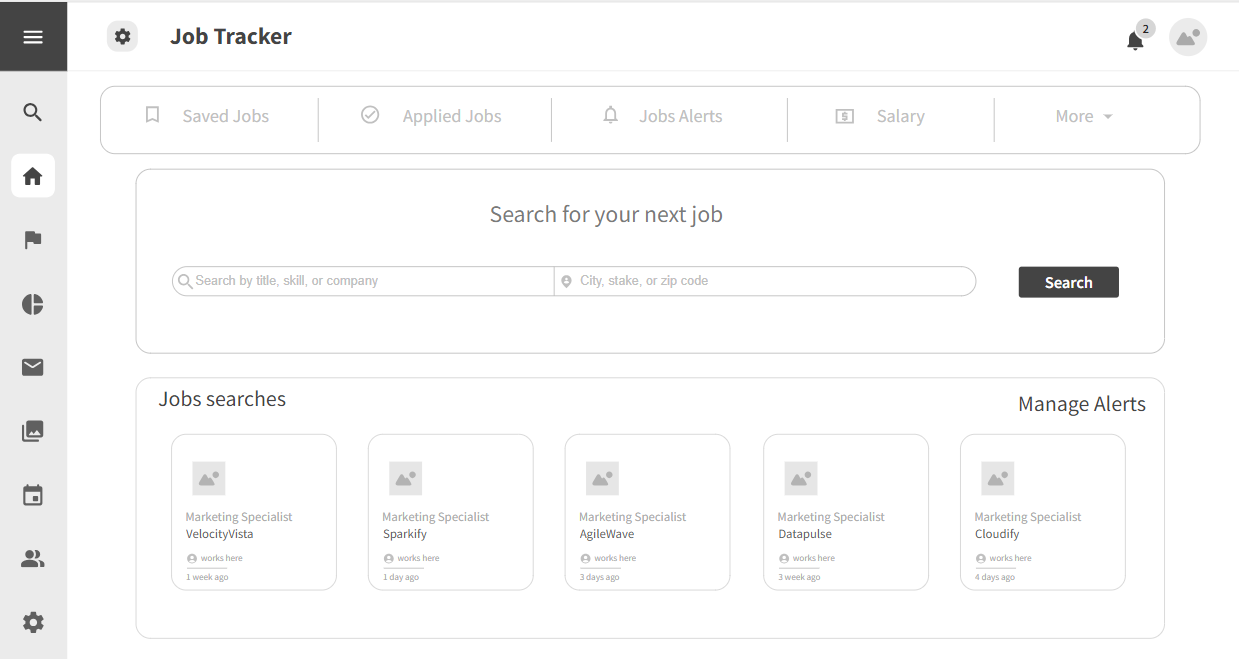
Strengths:
- Efficiency: Streamlines application management, providing a centralized view.
- Real-time Updates: Allows candidates to track the status of their applications in real-time.
Weaknesses:
- Limited Customization: Some platforms may have limitations in customizing application tracking based on unique needs.
- User Learning Curve: Users may need time to adapt to the application tracking features on the platform.
Opportunities:
- Integration with External Tools: Platforms could integrate with external tools for more comprehensive application tracking.
- Enhanced Customization Features: Improving customization options can cater to diverse reporting needs.
Threats:
- Privacy Concerns: Centralized storage of sensitive application data may raise privacy and security concerns.
- Competition in Tracking Tools: Other platforms with superior application tracking features may pose a competitive threat.
3.2.7 Communication
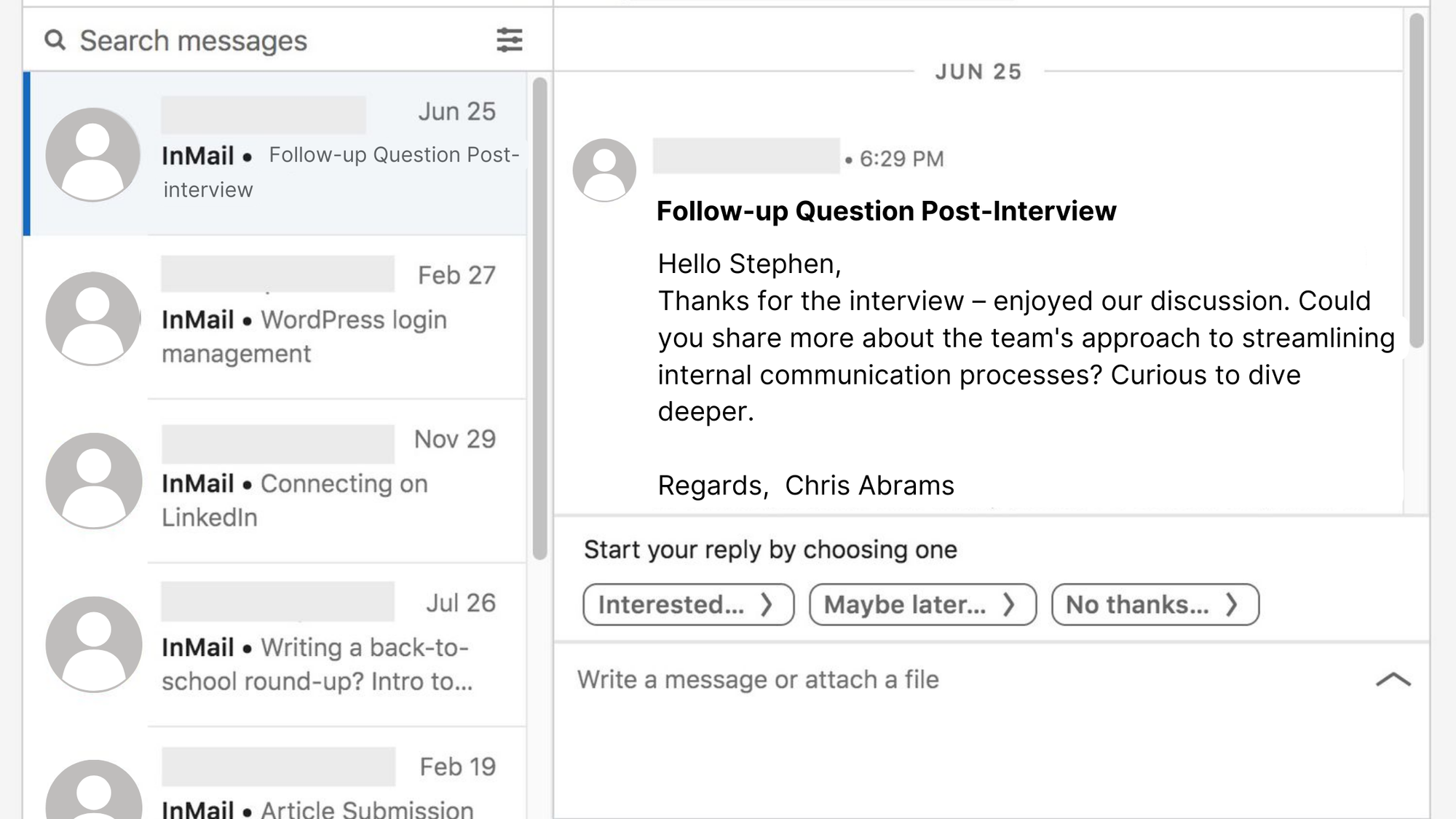
Strengths:
- Facilitates direct communication between candidates and potential employers.
- Enables quick and convenient information exchange during the recruitment process.
Weaknesses:
- Lack of real-time responsiveness from employers may lead to candidate frustration.
- Overemphasis on digital communication may diminish personal connection.
Opportunities:
- Integrate chatbots or automated responses to enhance communication efficiency.
- Provide features for scheduling interviews and follow-ups within the platform.
Threats:
- Competition from platforms with more advanced and responsive communication tools.
- Negative feedback due to communication delays or issues may impact user satisfaction.
4. Building an AI-powered Job Boards using HrFlow.ai
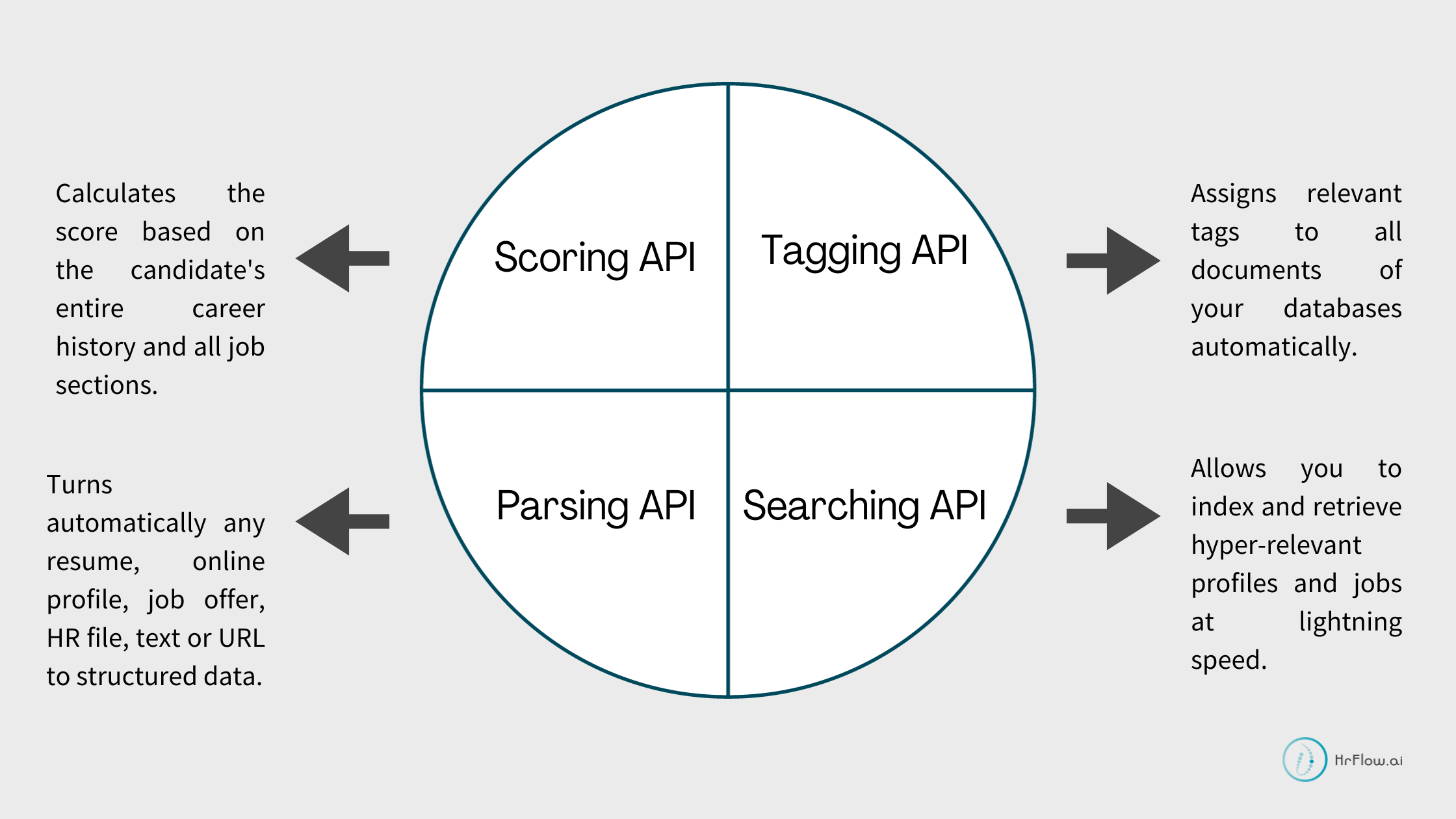
4.1 AI-powered Job Board for Recruiters
4.1.1 Account Creation
- AI powered job search: implement HrFlow.ai's Job Searching API for rapid and relevant job discovery, reducing the time spent on the sign-up process.
- Leverage HrFlow.ai's Job Searching API and Talent Copilot to optimize the sign-up process for candidates using mobile devices.
- Integrate Text Linking to automate data retrieval, allowing candidates to effortlessly populate information and streamline the sign-up process.
4.1.2 Job Posting
- AI powered job posting to relevant channels: HrFlow.ai Talent Funnels allows Recruiters to post their job offers to multiple channels thanks to its impressive library of 200+ connectors.
- HrFlow.ai can also help create custom workflows that follow specific business logic set up by the client.
4.1.3 Candidate Sourcing
- Integrate with more talent pools via API: HrFlow.ai Talent Funnels can help you easily connect to multiple talent pools of candidates.
- Advanced searching and AI-powered profile matching: HrFlow.ai Recruiter Copilot offers recruiters advanced searching and resume scoring capabilities to source candidates efficiently.
- Identify and engage active and passive candidates: HrFlow.ai Searching & Resume Scoring APIs can help you identify and target relevant prospects from various sources.
Read more about Hrflow's latest resume scoring algorithm, Cerebro: an advanced AI scoring algorithm.
4.1.4 Candidate Screening
- Relevant screening with AI searching and Matching: HrFlow.ai's Searching and Scoring APIs can be leveraged for AI-driven search and matching, ensuring relevant candidate screening.
- Assess soft skills and cultural fit: HrFlow.ai's Tagging API allows the assessment of soft skills and cultural fit by analyzing candidates' profiles and experiences.
- Save time and reduce unqualified applications: HrFlow.ai's Searching and Scoring APIs can efficiently filter out unqualified applications, saving valuable time for recruiters.
4.1.5 Candidate Shortlisting
- As a recruiter, depend on HrFlow.ai Recruiter Copilot for advanced searching and resume scoring capabilities to source candidates efficiently.
- HrFlow.ai Resume Parsing and Tagging API can automatically enrich candidate profiles by extracting and organizing information from various data sources.
- Protect candidate data and privacy: HrFlow.ai is designed with data security and privacy in mind, offering robust measures to protect candidate data.
4.1.6 Contact
- Optimize recruiters' time by exploring automated communication features within HrFlow.ai Workflows.
- Mitigate concerns about platform dependence by using HrFlow.ai Workflows to synchronize data between databases and HrFlow.ai servers. This integration diversifies communication channels, reducing reliance on a single platform.
4.1.7 Track Metrics and Analytics
- Advanced analytics and customizable reports: HrFlow.ai Usage Reports help recruiters review applicants' volume and sources. Moreover, HrFlow.ai offers structured and comprehensive data about applicants, which helps provide the best insights about your candidates.
4.2. AI-powered Job Boards for Candidates
4.2.1 Sign Up
- Implement HrFlow.ai's Job Searching API for rapid and relevant job discovery, reducing the time spent on the sign-up process.
- Leverage HrFlow.ai's Job Searching API and Talent Copilot to optimize the sign-up process for candidates using mobile devices.
- Integrate Text Linking to automate data retrieval, allowing candidates to effortlessly populate information and streamline the sign-up process.
4.2.2 Profile Building
- Utilize Talent Copilot for a seamless and secure profile-building process, overcoming platform limitations and ensuring data privacy.
4.2.3 Job Search
- Intelligent job recommendations using AI: The HrFlow.ai Talent Copilot can provide intelligent job recommendations tailored to candidates' profiles and preferences.
- Enhanced search based on experience and interests: HrFlow.ai's Searching API, integrated with the Rating and Tracking APIs, can offer an enhanced search experience based on a candidate's interests and experience.
4.2.4 Job Alerts
- Intelligent matching for relevant alerts: HrFlow.ai leverages its AI-powered Scoring algorithms to help send intelligent and customized job alerts.
4.2.5 Application Submission
- Automated job application: The Resume Parsing and Tagging APIs can automatically fill in application fields, reducing manual entry for candidates.
- Simplified applications through integrations: HrFlow.ai's various connectors enable a simplified job application process through seamless integrations with 200+ connectors.
- Status tracking and notifications: HrFlow.ai's Tracking API and Workflows can be configured to provide status updates and notifications about application progress.
4.2.6 Application Tracking
- HrFlow.ai's connectors can be integrated with the job board platform tools to track candidates’ applications.
4.2.7 Communication
- Leverage HrFlow.ai various connector to request feedback from recruiters or employers. Automated workflows can be set up to send polite follow-up messages, demonstrating your ongoing interest in the position and your commitment to improvement.
- Integrate external communication tools within HrFlow.ai Workflows to enable personalized messaging. Tailor your communication to specific job opportunities
5. How To Choose The Right Job Board For You
Identify Your Niche:
- Dive deep into your expertise and strengths.
- Align your qualifications with industry keywords.
- Opt for boards like Stack Overflow if you're a tech whiz seeking digital roles.
Research the Job Board:
- Immerse yourself in the board's job landscape and update frequency.
- Scrutinize its relevance to your niche and location.
- Unearth real user insights; for educators, platforms like Teach Away hold key reviews.
Compare Features:
- Dissect functionalities, design, and overall user experience.
- Demand more: profile creation, tailor-made searches, real-time alerts, and networking capabilities.
- Weigh the scales between the pros and cons; your job hunt deserves the best tools.
Test the Job Board:
- Do the user hat for a trial spin.
- Gauge success metrics: Do the posted jobs align with your ambitions? How's the response rate?
- Play the field – experiment with various boards. Graphic designers might find solace in showcasing their creativity on Behance.
Evaluate Results:
- Crunch the numbers, and absorb feedback.
- Measure the ROI: How many interviews and offers did each board yield? Was the job relevance on point?
- Seek the counsel of peers in your niche; the collective wisdom often trumps individual experience.
6. Conclusion and Key Takeaways
In summary, the integration of AI into job boards has significantly improved the job-searching experience.
With features like personalized job alerts and efficient communication channels, these platforms play a crucial role in connecting candidates with relevant opportunities. The impact of AI on job boards extends beyond convenience, reshaping the dynamics of the job market including resume parsing and fostering a more connected and responsive environment for job seekers and employers alike.
